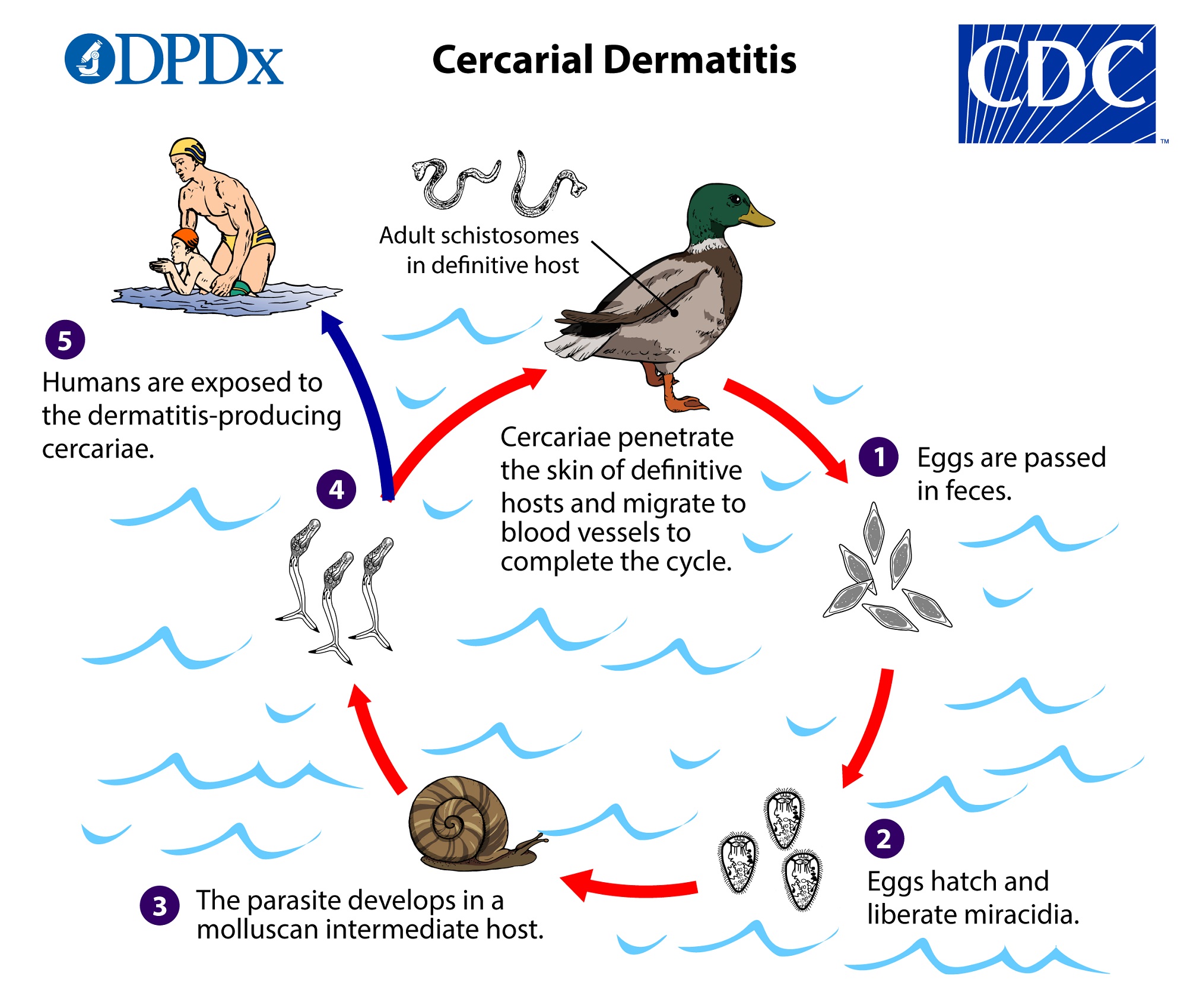
|
Austrobilharzia variglandis is a digenean trematode, an obligate parasite, whose life-cycle includes early stages (eggs, miracidia rediae, cercariae) in snails Ilyanassa obsoleta, (Eastern Mud Snail, NW Atlantic) and Tritia reticulata, Netted Dog Whelk, NE Atlantic), and adult stages in the digestive tracts of gulls (Larus spp, cormorants (Phalocorax spp.), turnstones (Arenaria spp.), diving ducks (Athya) sp. and other birds. As a parasite of birds, one can expect that its adult stages have a potential for wide natural dispersal. The eggs are contained in feces dropped by birds in the intertidal zone, and ingested by grazing snails. The eggs hatch into a larva called a miracididium, which penetrates the snail's tissues, and forms a sporocyst. Cells in the sporocyst develop into another form called a redia, which develops in the snail's digestive gland, and then metamorphose into a tadpole-like larva called a cercariae, which penetrate a prospective host's skin. When infected snails are eaten by birds, the metacercariae grow in the final host's digestive tract and reproduce. The cercariae can burrow into people's skin, casing dermatitis, known as 'Swimmer's Itch'. The condition usually lasts for only a few days, Austrobilharzia variglandis has been introduced to San Francisco Bay, Willapa Bay, and Boundary Bay, with the Eastern Mudsnail, which was introduced with Eastern Oysters. The diagram shows the life cycle of a typical digenean trematode causing swimmer's itch. |
|